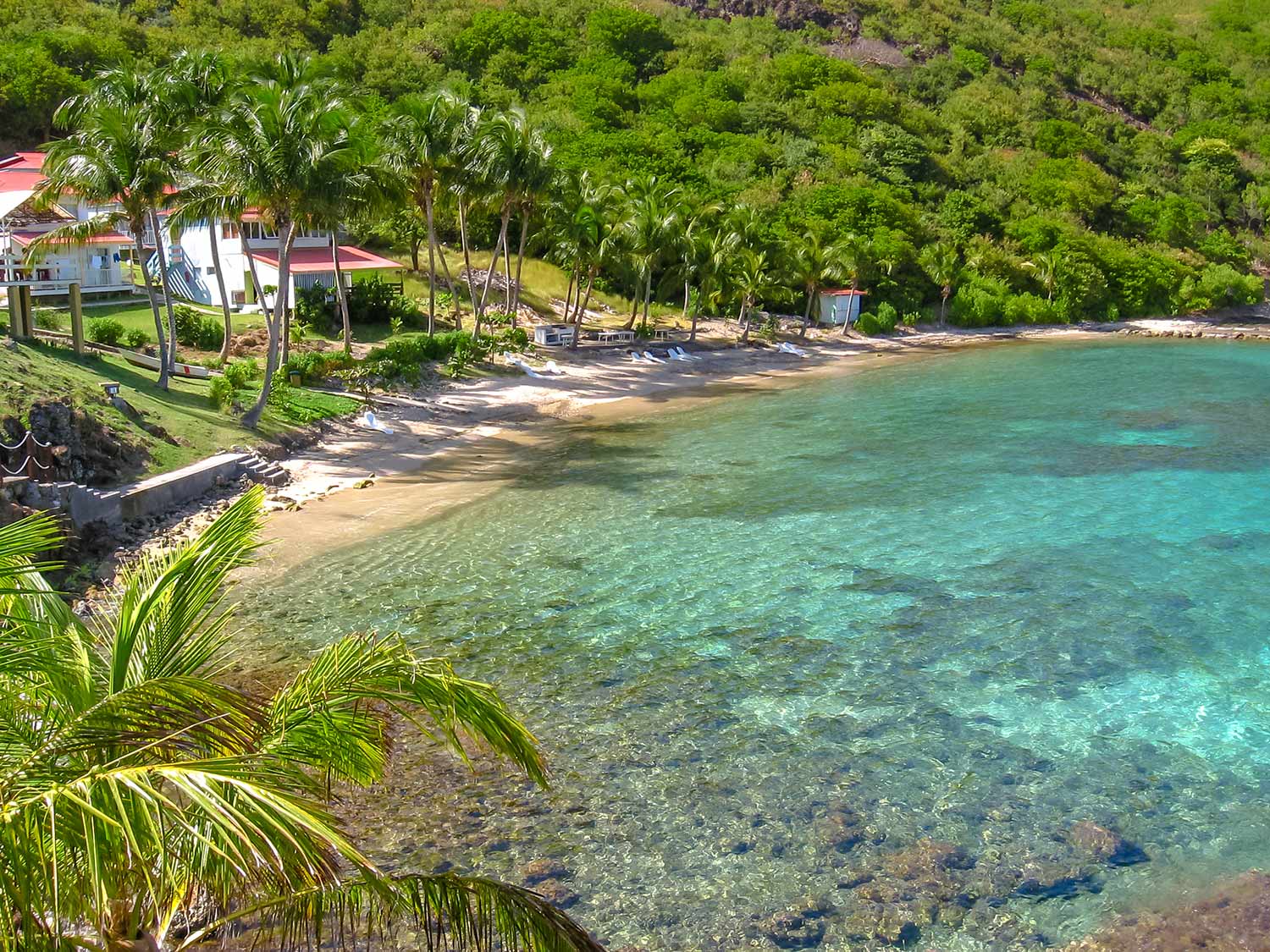Best Snorkeling Spots In Guadeloupe
Avid snorkelers won’t want to miss out on a trip to Guadeloupe, which boasts some of the most gorgeous and vibrant snorkeling spots in the Caribbean.
The French archipelago of Guadeloupe is home to the largest coral reef in the Lesser Antilles, with some of the most abundant marine life found in the Caribbean, which makes for some excellent scuba diving and snorkeling. In fact, it was the small Îles des Saintes and Pigeon Islands that captivated and inspired famed explorer and conservationist Jacques Cousteau to conduct his underwater research.
With a wide variety of spots perfect for novice and experienced snorkelers alike, there's no shortage of marine adventures to explore in Guadeloupe. Here are the best snorkeling spots in Guadeloupe.
The Coral Garden
The famed Coral Garden of Guadeloupe, often nicknamed "Réserve Cousteau after the French explorer of the same name, is located on the Pigeon Islands and consists of two tiny islets emerging from Bouillante and Malendure beaches on the west side of the archipelago. A protected area and part of the Guadeloupe National Park since 2009, the Coral Garden is accessible only by boat and showcases a unique selection of marine life including sea turtles, parrotfish, yellow goatfish, angelfish, and butterflyfish, just to name a few.
Those looking for exceptionally spectacular views should head to the northern end of the garden, where the seabed is covered with copious staghorn and elkhorn corals. Snorkelers are advised to swim carefully, as the reef-building corals are fragile and can be damaged if accidentally kicked by swimfin. There are plenty of guided tours for those looking to explore the Coral Garden, or those who want to go at it alone can rent a kayak to reach the tiny beach area.
Malendure
Those hoping to spot sea turtles need to look no further than Malendure, on the west coast of Basse-Terre, just across from Îlets Pigeon. Although the sea bed itself is not that impressive, comprised mostly of seagrass, it's an ideal spot to observe these majestic creatures—green sea turtles in particular. While you may come across some small jacks, damselfish, and other relatively common species of aquatic life, it goes without saying that the sea turtles are the main attraction of Malendure.
When sharing space with sea turtles, it's always important to keep in mind the basic rules of etiquette. In other words, don't go out of your way to touch them, definitely do not chase them or grab onto their shells, and of course make sure to leave them plenty of room when they come up to the surface to breathe. The sea is their home and you are a guest, so make sure to treat it as such!
Petite Terre
Located in a shallow channel between the isles of Terre-de-Bas and Terre-de-Haut and surrounded by a lagoon, Petite Terre is one of the best snorkeling spots in Guadeloupe. The area to explore covers approximately 150 meters, and is only accessible by sea–either your own boat or with a guided excursion—about 12 miles off the coast of Saint-François. However, the trek is worth it as Petite Terre is home to a unique concentration of underwater aquatic life.
Snorkelers can find lemon sharks close to the beach, and further out rays and barricudas. A reef partially blocks off the right side of the channel, facing Terre-de-Haut, where surgeonfish, angelfish and pufferfish, and small groups of jack can be found among the coral formations. As the current runs right to left, it's best to start out by the reef and let yourself drift out towards the sea–however visitors are advised not to drift too far as the sea becomes rougher the further out you go.
Anse Mire
For an experience like no other, head down to Anse Mire, a small cove tucked into the island of Terre de Haut—in the Les Saintes archipelago about 10 miles south of Guadeloupe—known for being one of the most beautiful bays of the Caribbean. In addition to the bluehead wrasse, moray eels, and trunkfish you'll find along the shallow coral reef, Anse Mire even boasts an actual shipwreck–the Lynndy, which is situated about 100 metres from the beach. The island is an easy jaunt from the southern point of Trois-Rivières, where a number of boats cross every day.
Once on the island, snorkelers can access the water from the Anse Mire beach, which is inhabited by iguanas. However, the beach is also dotted with poisonous manchineel trees, so travelers are warned not to touch the trees or their fruit. Due to the poisonous trees, it's also advised that you avoid sitting on the beach after it rains. Although there are no restaurants or facilities located on or around the beach, Anse Mire is also just a short 10-minute walk from the island's main village of Terre de Haut.
Plage du Pain de Sucre
Just a short trek down the coast from Anse Mire on Terre-de-Haut, you'll find Plage du Pain de Sucre. The golden sand and translucent waters make this an ideal spot for snorkeling, although the best sights can be found near the rocky outcrops on either side of the bay where fish dance between the sea fans, sponges, and coral formations along the rocky seabed. The central part of the bay on the other hand, is primarily made up of seagrass and sandy beds.
Snorkelers will find that the area to the right of the bay boasts the most spectacular views with multi-colored sea fans that sway in the current, as well as flamingo tongue snails, sponges and sabella, and an array of brightly-colored fish. The left side of the bay, although somewhat less impressive, also spotlights an array of fish and should not be overlooked.
